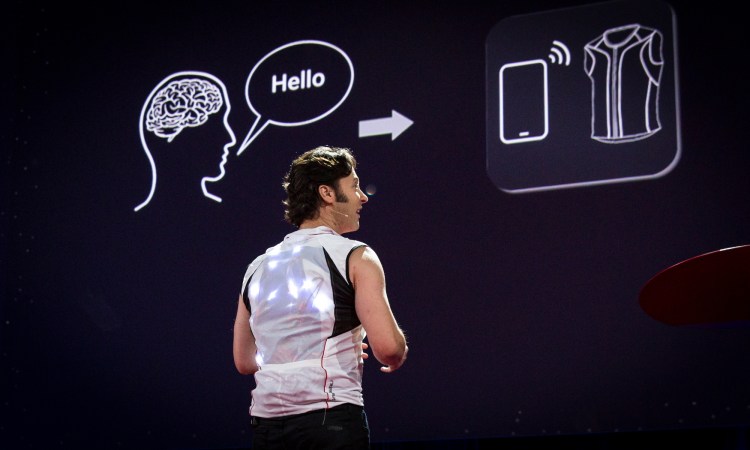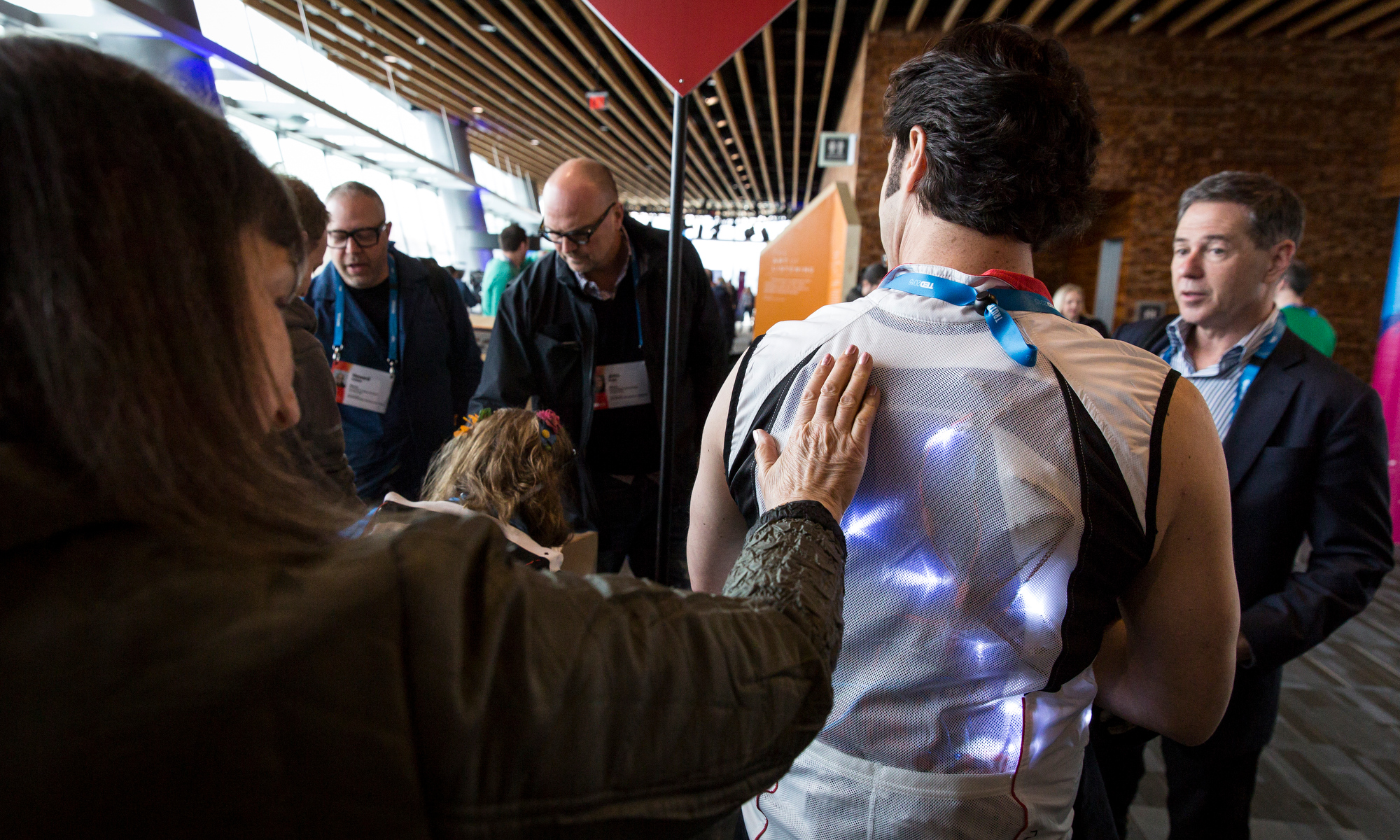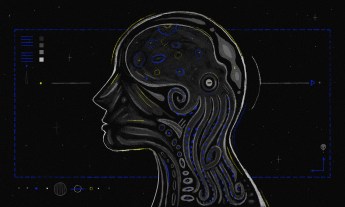
“We’re interested in how we can feed information to the brain via unusual sensory channels,” says David Eagleman, as he leans back in his chair and sips his cup of tea. The neuroscientist and author is discussing the project he’s currently working on with his grad student, Scott Novich, the “versatile extra-sensory transducer,” or, you know, “V.E.S.T.” But this isn’t any old vest. It’s a vest installed with tiny motors that can convert sound and noise into vibrations on the back, allowing deaf people to hear the world through their chest.
It might sound radical, but to Eagleman, it presents a fairly obvious, exciting possibility. “If this works well, and it looks quite promising, we can build it for 40 times more cheaply than a cochlear implant,” he says. “And ours doesn’t require an invasive surgery.”
So how does it work? By playing on the brain’s aptitude for assigning meaning to patterns, it converts sound frequencies into vibrations via a mobile phone and a smart piece of computational design. And while it’s still early days, Eagleman is optimistic that someone might learn to hear through the vest within about three months. “Our expectation is that by then someone will not only be able to understand everything but will have a direct perceptual experience equivalent to hearing, but through the torso,” he says. “It sounds crazy that you could ever see through your tongue or hear through your torso, but that’s all vision or hearing ever is. It’s just electrical signals in the brain; the brain doesn’t care how it gets them.”

Eagleman isn’t limiting his ambitions for the vest to deaf people, for substituting senses; he’s also interested in what he calls sensory addition, or adding entirely new senses to the human experience. For instance, what if we could stream realtime data from the stock market to allow someone to make subconscious buy or sell decisions, to have what he calls a “direct perceptual experience of the economic movements on the planet?” Or what if a pilot could understand the measurements of a plane by feeling them, not merely by looking at them. “Have you seen the cockpits of modern aircraft?” he asks. “They’re completely overwhelming! Imagine if you could feel the whole state of an aircraft in an unconscious manner.” Move over data visualization. Here’s the era of data sensing.
Featured image by Bret Hartman/TED.












